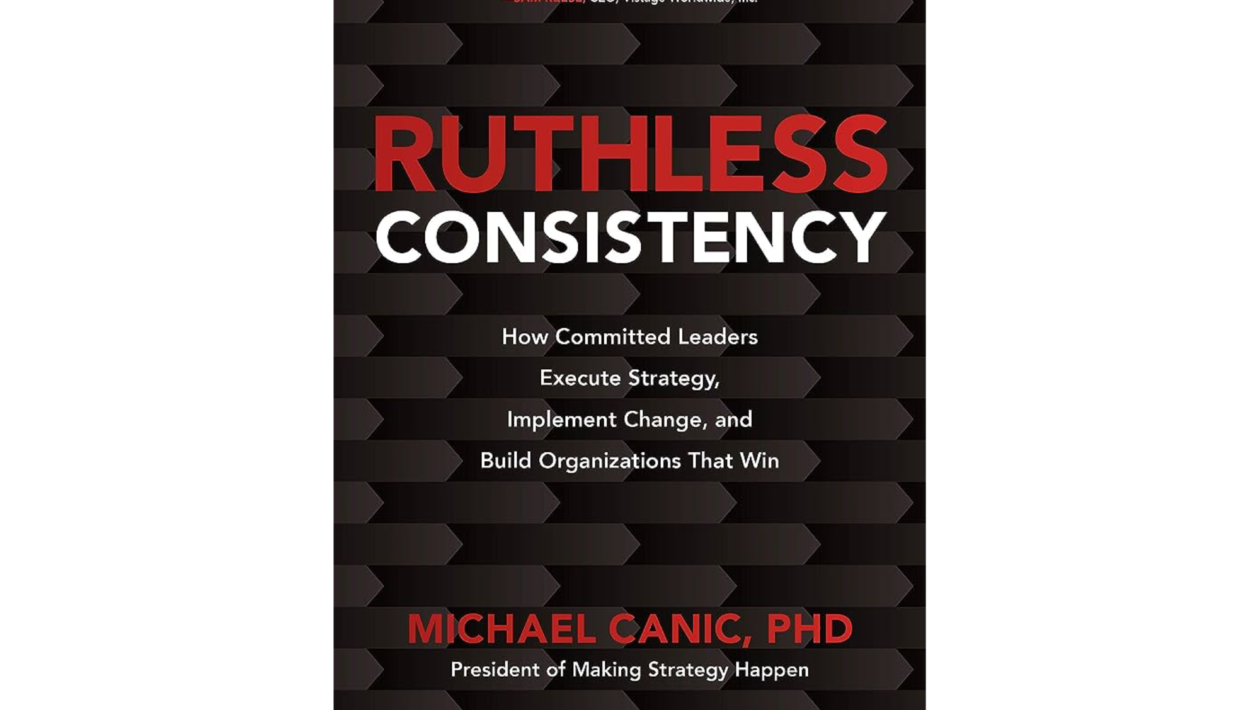By Michael Canic
McGraw-Hill (2021)
Hardback, 363 pages
Reviewed by EMMANUEL ASIEDU
Ruthless Consistency is a comprehensive and thought-provoking book with the sole aim of helping leaders identify and execute winning strategies in these turbulent times of geopolitical, environmental, economic turmoil. The author, Michael Canic, identifies the fundamental principles behind an organization’s failure. Canic states that the organizations that fail to thrive and win create a “track record of failure; create expectation of failure; create acceptance of failure and create culture of failure” (p. 31). The leaders who fail to innovate and strategize often rationalize and embolden the failure culture and cast improper vision. The author blames leadership for organization’s failure because leaders are responsible to “execute strategy, implement change, and build organizations that win” (p.32).
In contrast with failing entities, Canic suggests important principles for better implementation and execution of winning strategies. The first principle is understanding the whole realities of the organization and ensuring that every action and every decision aligns with the organization’s strategy. “Everything matters and points to the right direction consistently” (p. 37). “Everything” includes leadership communication, compensation, culture, supervision, employees’ working environment, financial matrix analysis, etc. Any misalignment could create a problem leading to the organization’s failure. Inconsistency and misalignment are recipes for disaster. The author made this analogy to buttress his point on ruthless consistency. “Think of it this way. It takes only one misaligned wheel to make your car undrivable, one misaligned vertebra in your back to incapacitate you. One misaligned element in any system can undermine everything” (p. 38).
Another ruthless consistency principle in the book is to develop the right focus, create the right environment, and create the right team, continually.
Developing the right focus means identifying and articulating why your organization must change, what you intend to achieve, and how you intend to achieve it. Creating the right environment means aligning every organizational touchpoint, so that your team can and will execute on the right focus. Building the right team means securing the right collection of talent to make it happen. (pp. 10, 12)
Canic believes that a leader with a winning attitude and a commitment to success—plus a combination of right focus, right environment, and the right team—will achieve organizational success.
Furthermore, leaders should see strategic planning as a managed ongoing process of consistent evaluation rather than as an event. The effectiveness of the strategic planning depends on the leaders’ seeking inputs and commitment from all their employees. The author identifies a leader’s negative traits—such as complacency, arrogance, and the fallacy of extrapolation—as the main reasons leaders fail to execute a winning strategic plan. Leaders who don’t listen don’t win.
The author has skillfully outlined examples of winning and losing entities resulting from effective and ineffective strategies and their implementation. Canic uses a lot of analogies to bring a full meaning to the ideas outlined. Throughout the book can be seen the blending of ideas from the pathgoal theory and situational theory in drafting and implementing winning strategies. In selecting the right people for specific tasks, the author lists qualities such as willingness, vision, and consistency as important in achieving better results. This masterclass book is well organized, coherent, and easy to read. This book is a great read for leaders of nonprofit and for-profit entities with a heart of empathy backed by the willingness to assemble the right team and to execute effective winning strategic innovations and ideas.
However, the author fails to acknowledge the full impact of political and socioeconomic factors on an organization’s strategies and implementations. In addition, Canic does not note that businesses are different in every sector. The ruthless consistency principles may not be applicable in all sectors. Leaders are also different. A principle that works for one leader may not work for another leader. Finally, the author fails to note that the complexities of business leadership go beyond strategy execution and its consistency application.
In conclusion, leaders need to adapt their strategies to withstand the realties. The shrinking labor force and great employee resignation movement have put leadership on high alert to execute winning strategies. Despite the turbulent times of geopolitical pressures, a competitive housing market, inflation, labor shortages, and fierce competition, ruthless consistency in strategy implementation is the key leaders need to be successful in this current environment.
Emmanuel Asiedu, MBA, CPA, CMA, CIA, CGMA is the chief financial officer/treasurer of the Columbia Union Conference of Seventh-day Adventists. He is a doctoral candidate in leadership at Andrews University.

